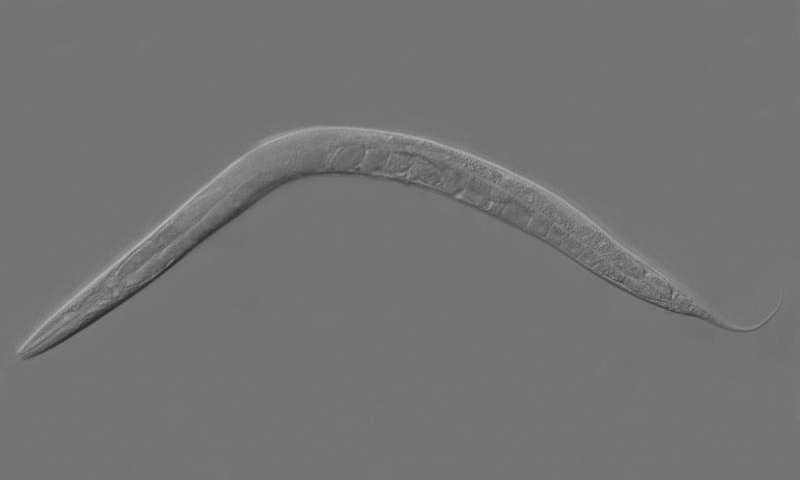
For the first time, researchers at the University of California Santa Cruz have shown that epigenetic marks — changes in gene expression that does not involve changes to the underlying DNA sequence — can be transmitted from parents to offspring. Namely, the transmission of epigenetic marks by Caenorhabditis elegans sperm.
Epigenetic changes do not alter the DNA sequences of genes — the actual blueprint for life — but rather involve chemical modifications such as methylation of DNA and covalent modification of histone proteins that package DNA in the chromosomes. Epigenetic changes are handled in part by specialized proteins called transcription factors, which bind to specific sequences in our DNA.
These modifications influence the way an organism functions by activating or deactivating the expressions of certain genes at different stages of a cell’s development. Previously, studies have shown that such epigenetic modifications might be transmitted from one generation to the next. For instance, the epigenetic changes caused by a person’s diet and environmental stressors (i.e. pollution) could potentially be passed on to offspring who would bear these gene expression alterations without actually having to go through the same experience.
One famous example of epigenetics in action involves the case of a group of women who lived through starvation during the 1944 Nazi blockade of food supplies in the Western Netherlands. The harsh winter and food embargo caused pregnant women to birth smaller babies than they should have under normal conditions.
However, even though these children grew up in relative prosperity after the war had ended, their babies were also unexpectedly small. Later, researchers at the Columbia University Medical Center in New York found that the genetic response to starvation is passed down at least three generations. Even the genetic changes caused by trauma can get passed on to offspring, as demonstrated by a study of Holocaust survivors.
Susan Strome and colleagues at UC Santa Cruz wanted to learn how transgenerational epigenetic inheritance works at the molecular level. Other studies have shown that 10% of histone packaging is retained in both human and mouse sperm. But when Strome’s team analyzed C. elegans sperm, they found that its genome fully retains histone packaging, making this worm the perfect animal model for this study.
“We decided to look at C. elegans because it is such a good model for asking epigenetic questions using powerful genetic approaches,” said Strome in a statement.
“Like zebrafish, worms represent an extreme form of histone retention by sperm, which makes them a great system to see if this packaging really matters,” she added.
The researchers focused their efforts on H3K27me3, an epigenetic mark of repressed gene expression in a wide range of organisms. When this mark was removed from sperm chromosomes, the majority of the worm’s offspring became sterile. Next, the researchers want to establish whether this mark is sufficient to guide normal germline development.
To find out, the team employed a nifty experiment in which the analyzed a mutant worm whose chromosomes from sperm and egg were separated in the first division after fertilization. In other words, one cell of the embryo inherited sperm chromosomes and the other cell inherited only egg chromosomes.
This segregation allowed the researchers to breed worms whose germ line inherited only sperm chromosomes, allowing them to tease out only sperm epigenetic marks. These worms turned out to be fertile and had normal gene expression patterns.
“These findings show that the DNA packaging in sperm is important, because offspring that did not inherit normal sperm epigenetic marks were sterile, and it is sufficient for normal germline development,” Strome said.
So, the study’s findings not only document the transmission of epigenetic memory via sperm but also show that epigenetic information delivered by sperm to the embryo is both necessary and sufficient to guide proper development of germ cells in offspring. The study, however, does not answer whether the experience of a father can affect the health of his descendants — that’s a question which Strome’s lab hopes to answer in another study in which they starve worms or treat them with alcohol before reproducing.
“The goal is to analyze how the chromatin packaging changes in the parent,” she said. “Whatever gets passed on to the offspring has to go through the germ cells. We want to know which cells experience the environmental factors, how they transmit that information to the germ cells, what changes in the germ cells, and how that impacts the offspring.”


